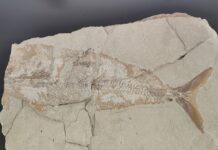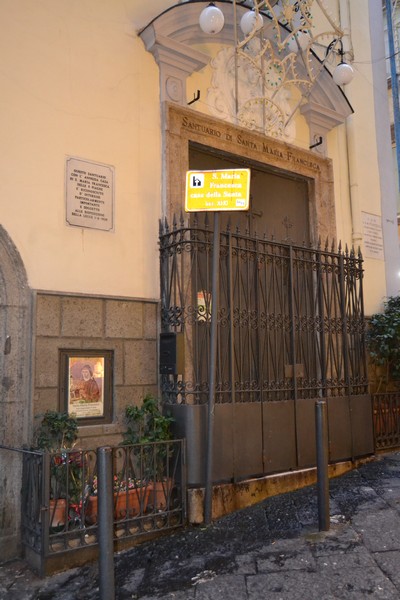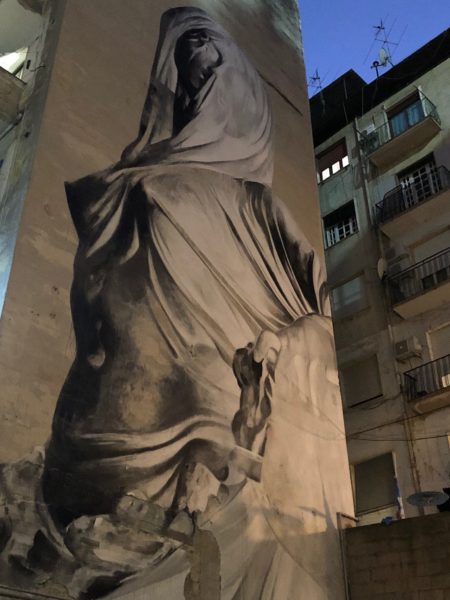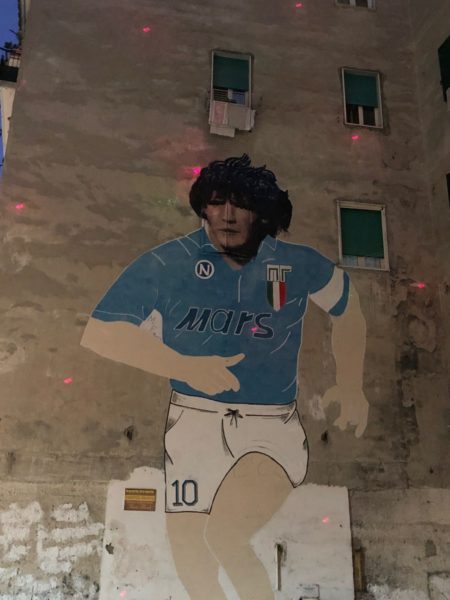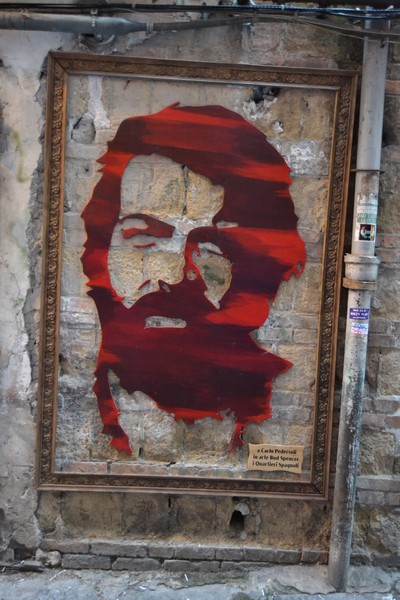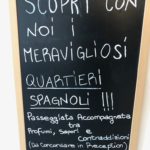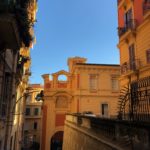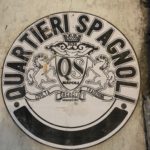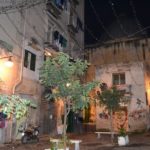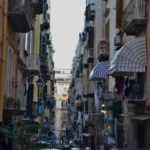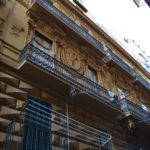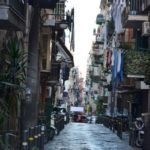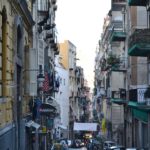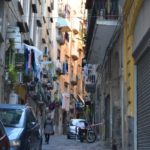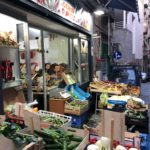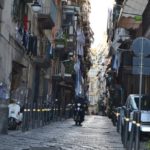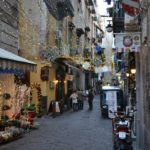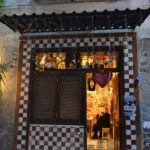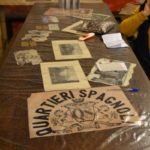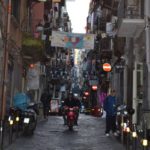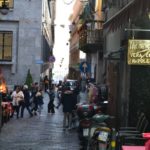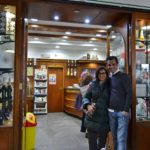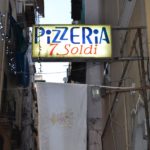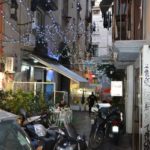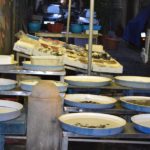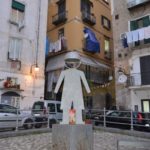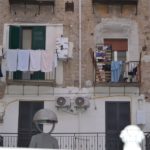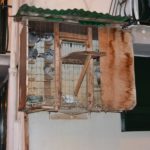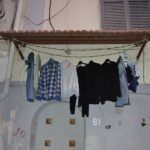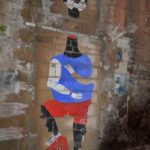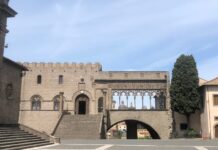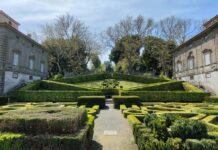When we begin to descend from Casa Tolentino towards Corso Vittorio Emanuele to reach Quartieri Spagnoli, the light of the warm winter afternoon sun is reflected on the walls of the yellow tuff buildings that seem to absorb the rays.
In the dedal of alleys and small squares
Giuseppe Maienza accompanies us, responsible for organizing the events of Casa Tolentino that hosts us and we will talk about you in #sognidoro, as well as the soul of the Quartieri Spagnoli association. He will tell us this district of the city.
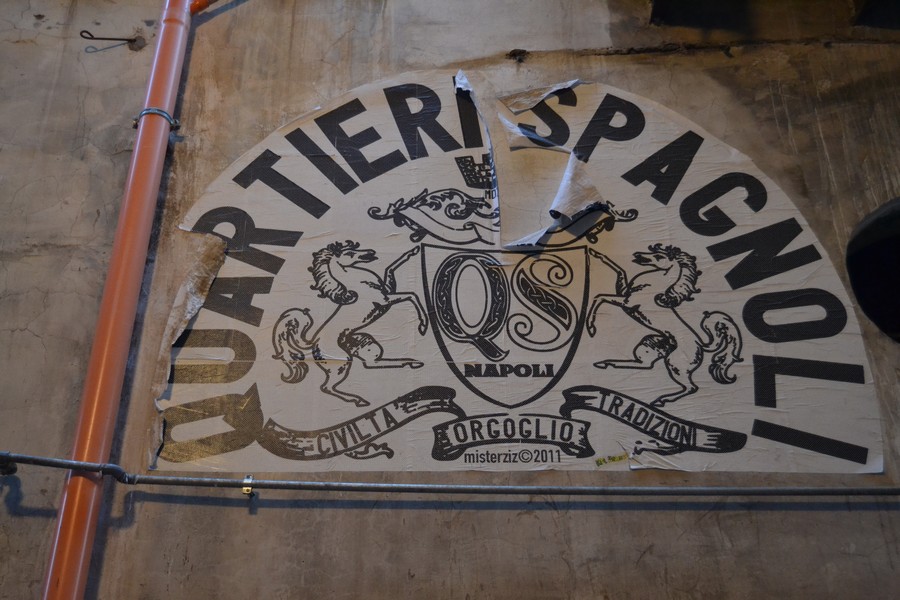
In reality, Quartieri Spagnoli do not exist because what is defined as such is the set of neighboring districts, San Ferdinando, Montecalvario and Avvocata, which are bordered by Via Toledo below and Corso Vittorio Emanuele above. They were called this way because in 1536 the Spanish viceroy Don Pedro de Toledo built houses and palaces for his troops but also for the noble families who followed him to Naples. And the order of importance of the buildings is outlined starting from the proximity to the Royal Palace. So the oldest and most impressive are right next to Via Toledo.

Peppe then points out another interesting detail: many streets have names that refer to fruits and plants. Here, in fact, before the barrio-quartel, a military and residential settlement together, there was so much green then completely engulfed and replaced by the houses that extend up to Corso Vittorio Emanuele, which is the result of the mid 800 and was realized literally above the pre-existing dwellings that are still there as a sort of ghost from the stone foundations.
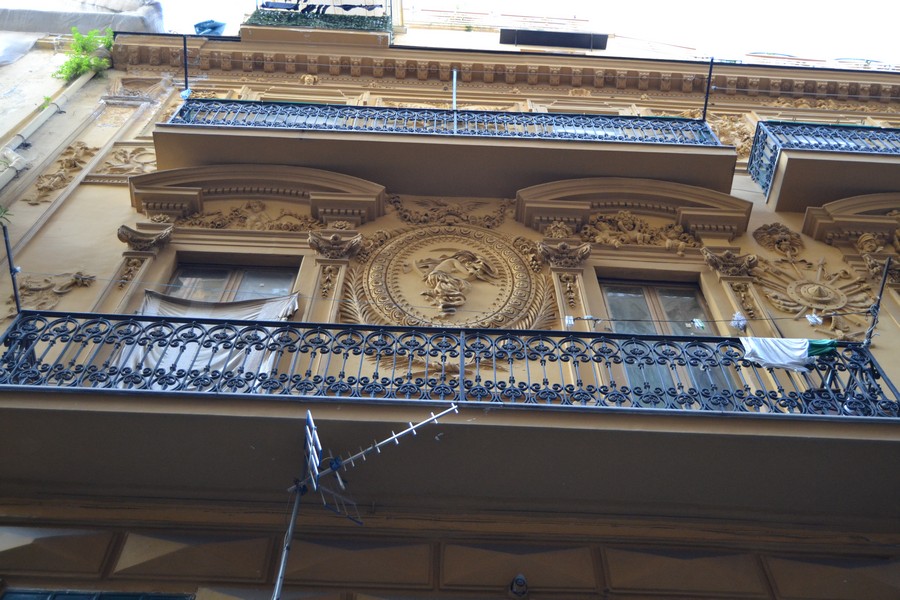
Entering through alleys and small squares you walk and stumble in history but also in the small stories of this true Naples. Eleonora de Fonseca Pimentel abducts us: we stop in front of the great door of her palace and imagine the moment when she was taken away to be executed among the patriots of the Neapolitan Republic of 1799.
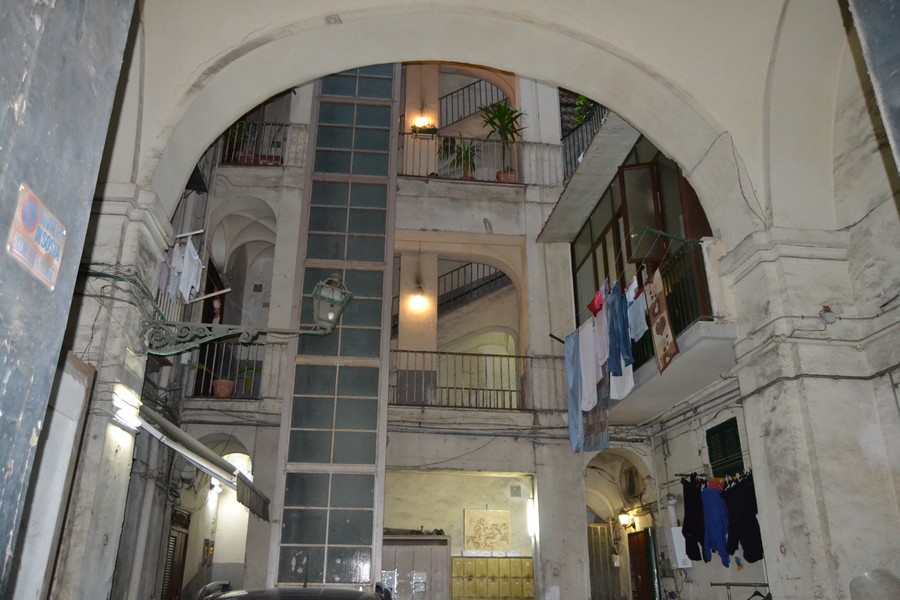
Another hallway, that of a popular palace. In Naples, a fundamental figure in these buildings so densely and often inordinately inhabited is that of the doorman, who is not only the one who takes care of the property that has been entrusted to him, but represents a point of reference for all the condominiums. A role so prominent as to deserve honors also to the cinema and TV. The most famous is certainly Antonio Bonocore, played by the great Totò in La banda degli onesti of 1956. Moving to the world of soap, the protagonist is Palazzo Palladini doorman Raffaele Giordano in the series Un posto al sole, played by Patrizio Rispo.
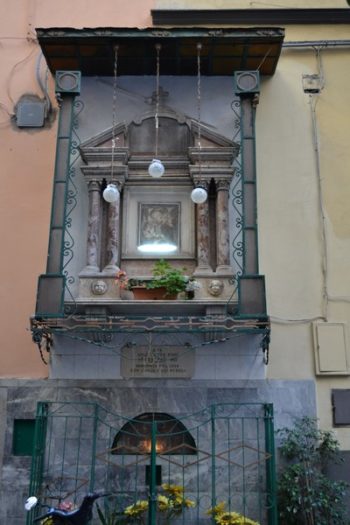 Despite what at first glance may seem, Naples with all its contradictions and its often antithetical aspects, is the city of equilibrium. This word often returns in Peppe’s speeches accompanied by thoughts on the possibility of finding stimuli and above all of believing that an alternative exists.
Despite what at first glance may seem, Naples with all its contradictions and its often antithetical aspects, is the city of equilibrium. This word often returns in Peppe’s speeches accompanied by thoughts on the possibility of finding stimuli and above all of believing that an alternative exists.
Looking up then you realize that it’s all a matter of balance between sacred and profane, between votive aedicules and clothesline in every corner, where the space is so small that cars, scooters and stalls of all kinds invade the streets.
This part of Naples has anticipated the concept of the current large shopping centers and everything is on display and on sale on the street, even mattresses.
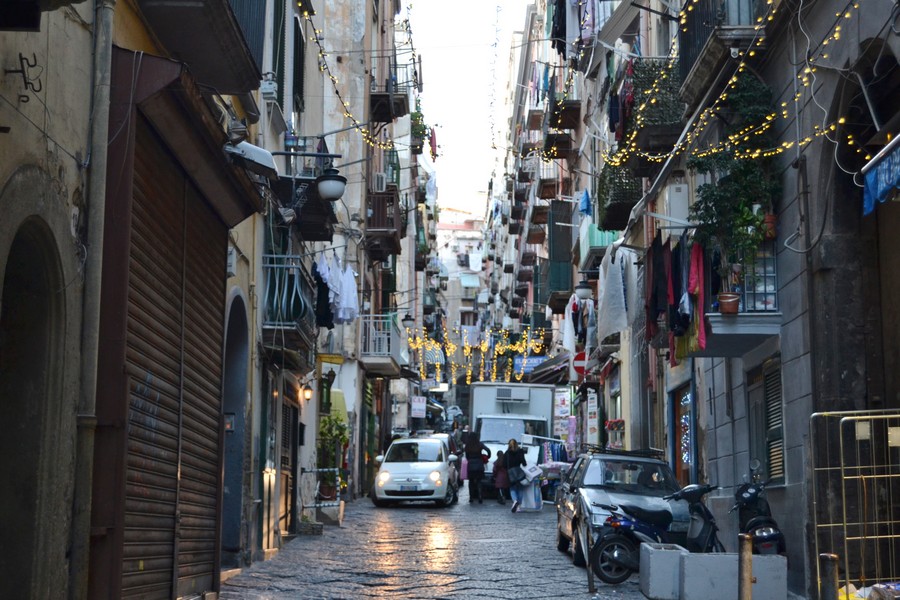
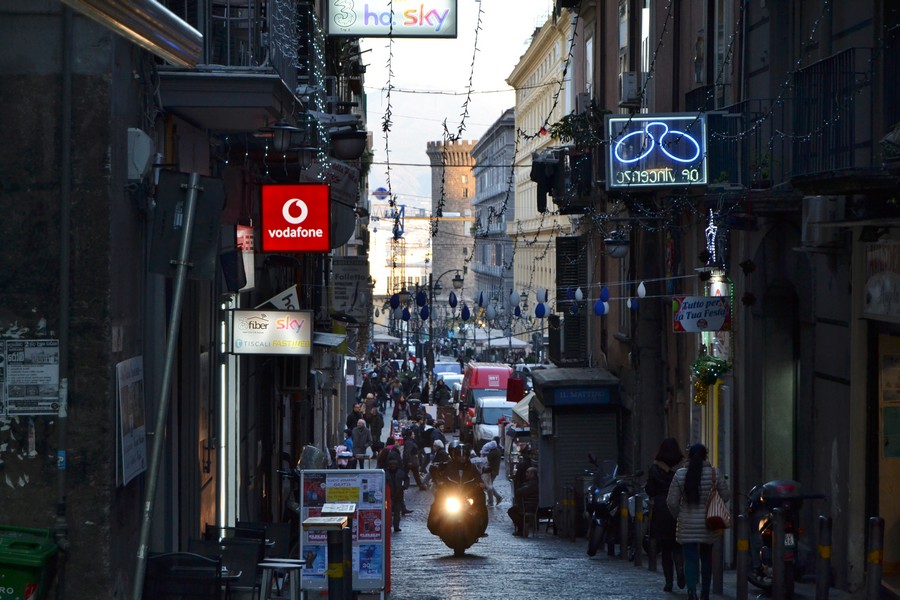
Then you walk untangling between scooters and cars that bolt out at high speed and people looking out from their “bassi”, ground floor house at street level. It has always been a symbol of promiscuity and an inseparable link between food and prostitution: great writers like Curzio Malaparte talked about it telling the American occupation, but our guide assures us that bassi and streets have always been so ever since the troops and noble Spaniards quartered in the area.

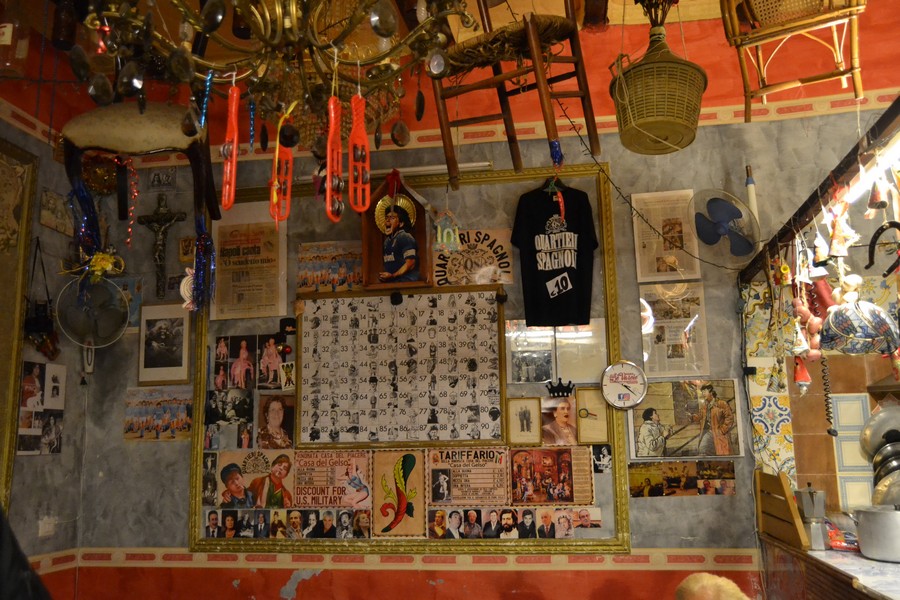
Today many have been “reconverted” as O ‘Vascio e Nunziatina, one of the characteristic bassi in vico Lungo Gelso, transformed into a home restaurant: let’s get to know her and visit her kingdom where kitchen and bed are visible and the walls covered with relics from the post-war prostitute rate card to the first page of the Corriere dello Sport of the Napoli championship. The experience of a dinner should be made because together with the traditional dishes Nunzia Rivetti puts on the table the many stories that tells between one course and another, intertwined with childhood memories.
There are no churches dedicated to great saints and yet the sacred in these streets is felt everywhere and explodes near the church of Santa Maria Francesca of the Five Wounds with the cult of the Chair of Fertility, a real sanctuary in the middle of the alleys. In what was the home of the saint there are those who ask for the grace of a child and the walls of the small room where there is the statue of the saint are covered with bibs and pink and blue bows. In the next room, however, there is her chair: who wants to have a child, sits there, embraces the relic and asks for grace.
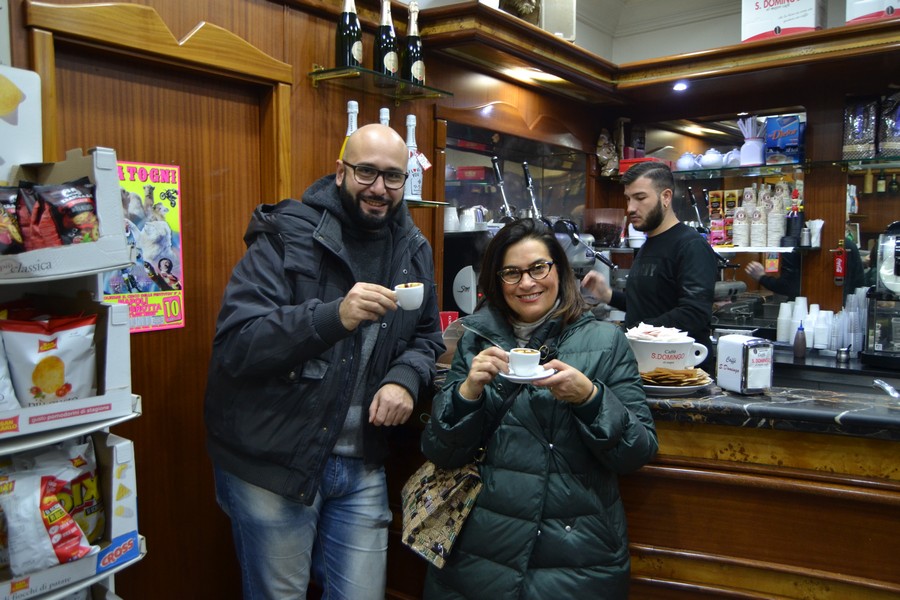
The stories of Peppe have literally kidnapped us but welcome the proposal to go get a good coffee. Coffee in Naples is not just a drink, but a ritual that revolves around the myth of the tazzulella. The coffee tradition in Naples has a milestone that is the coffeepot, cuccumella in Naples, made immortal by Eduardo De Filippo in Questi fantasmi. The napoletana has over time been replaced by mocha, but in many Neapolitan homes it is still in full swing.
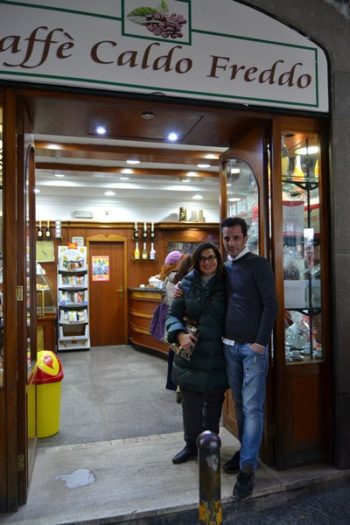
But whether at home with mocha or napoletana, or espresso at the bar, it is difficult to avoid the invitation ‘Nce pigliammo’ nu cafè (drink a coffee). And we took it with Peppe in the hot-cold version proposed by Caffè Mastracchio (vico della Tofa 4) in one of the alleys that descend towards Via Toledo: a real delicacy, composed of hot coffee topped by a vanilla ice cream and a touch of chocolate.
Then we resume the tour and arrive in a widening created by the sadly famous earthquake that devastated Irpinia on November 23, 1980. Many injuries and collapses also took place in Naples and here remains some evidence of this.

But the reason for our deviation is not this, but the two huge murals facing each other in empty space.
Peppe tells us that many Neapolitans of Quartieri have discovered the existence of the extraordinary veiled beauty of Pudicizia, Antonio Corradini’s sculpture in the San Severo Chapel, thanks to the work that decorates a condominium in Via Emanuele De Deo created by the Argentinian artist Francisco Bosoletti.
The same painter has restored the head of Diego Armando Maradona portrayed on a six-story building in 1990 to celebrate the second Scudetto of Napoli. The giant of the Pibe de oro, portrayed in a dribble pose with the historic Mars shirt, was designed by a young man from the Quartieri Spagnoli, Mario Filardi, who died a few years ago in Zurich. Over the years Maradona had lost his face due to the opening of an abusive window on the façade, but in 2016 the carpenter artist Salvatore Iodice gave it back through a restoration financed by the residents and supported by the Municipality who provided a forklift for two days. And, underlines Peppe, since then who lives in the apartment as a great fan of Naples never opens that window not to ruin the effect of recovery.
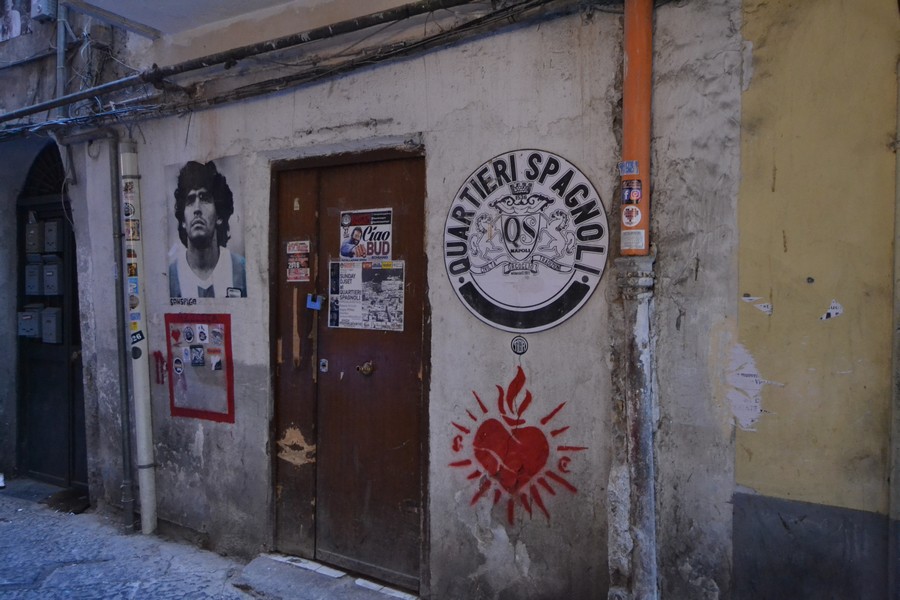
This also helps to reevaluate the area, involving citizens and institutions, for a revival of all the Quartieri Spagnoli. The young people of Casa Tolentino are firmly convinced of it, and Peppe remarks quoting Dostoevsky: “without beauty there would be nothing to do in the world”. But we must teach people to recognize it in order to be able to then respect it. So the daily exercise of beauty is fundamental with a serious and constant action, working at the service of others and committing ourselves to create it as hard as it is. This promises to make Quartieri Spagnoli (www.quartierispagnoli.org), an association born from the idea of Salvatore Iodice, Fabio Zizolfi and Giuseppe Maienza to redeem these areas symbol of Naples.
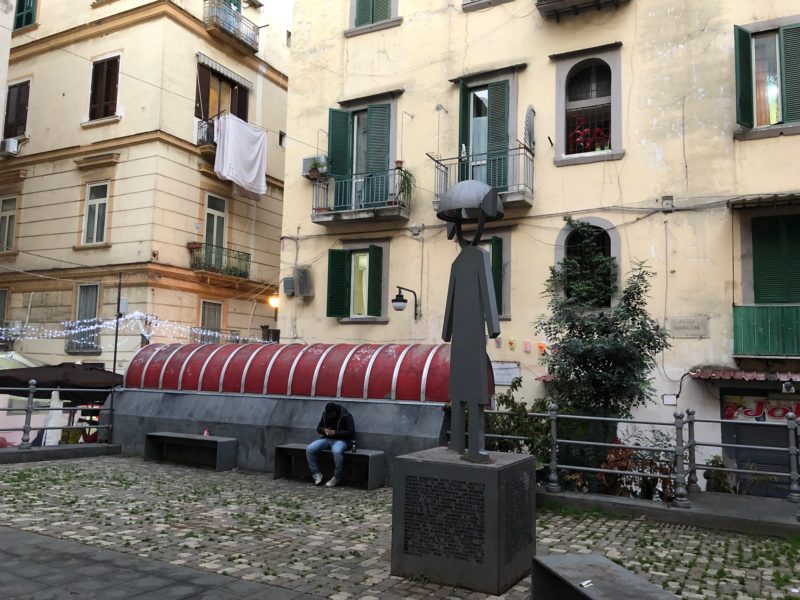

The redevelopment process also involves the return of public spaces to residents. These squares, until recently, were invaded by cars such as Largo Barracche and Piazzetta Trinità degli Spagnoli. Today they are home to two stylized totem street lamps in the shape of a child and three trees that recall the woods that once covered the area.
Returning to the murals on the houses, if the undisputed protagonist remains Maradona, a prominent place has also the good giant Carlo Pedersoli, Neapolitan doc and better known as Bud Spencer. Very interesting are the works of the Neapolitan duo Cyop&Kaf, who have transformed the Neapolitan urban sceneries into a great story in which human and mythological figures are protagonists. Over 200 works scattered among alleyways and alleys to be discovered by themselves almost lost or guided by those like Peppe explains the how and why of the birth of certain images on the wall of a basso or on the garage gate.

We go down to via Toledo or via Roma as the Neapolitans call it: it looks like another Naples. Lots and goings of people, illuminated windows and large buildings. And to think that a very high percentage of people who walk on the pedestrian path that leads up to the Royal Palace have never gone into the maze of roads we have traveled so far.



